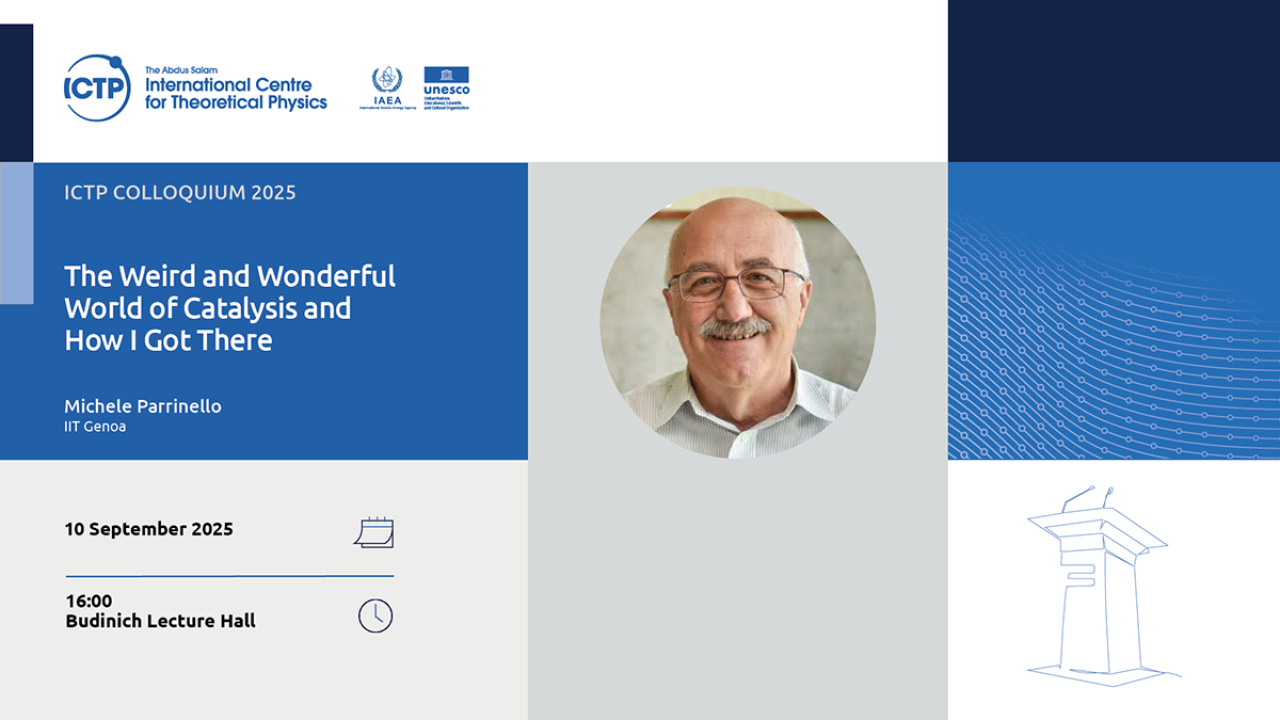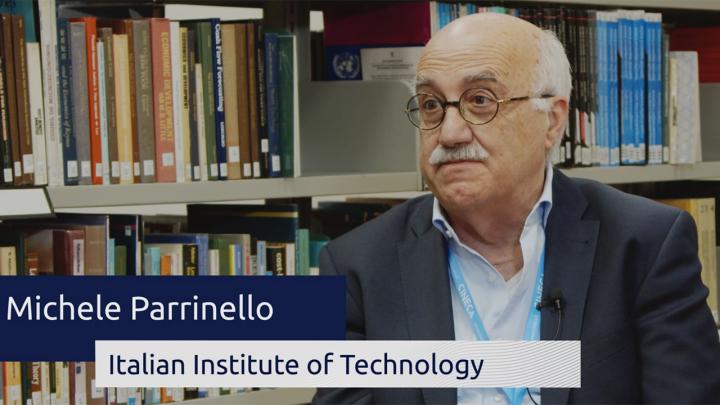
ICTP is pleased to announce a colloquium by Michele Parrinello, a senior researcher at the Italian Institute of Technology in Genoa, who will speak about "The Weird and Wonderful World of Catalysis and How I Got There". The talk will take place in ICTP's Budinich Lecture Hall on Wednesday 10 September starting at 16:00, and will be livestreamed.
The colloquium is part of ICTP's Conference on Frontiers in Atomistic Simulations: from Physics to Chemistry and Biology.
Parrinello has a long history with ICTP and its host city, Trieste. In the 1980s, the Italian physicist and his colleague Roberto Car conducted research at ICTP, the International School for Advanced Studies (SISSA) and the University of Trieste that led to the development of the revolutionary Car-Parrinello molecular dynamics simulation method for condensed matter. The method has provided an all-important quantitative understanding of the properties of matter, while also allowing scientists and laymen alike to visualise atoms in motion during physical and chemical processes. Parrinello and Car shared ICTP's 2009 Dirac Medal for their joint contributions in developing this ab initio simulation method.
He has been a full Professor of Computational Science at ETH Zurich since July 2001. Until March 2003 he was Director of the Swiss Center for Scientific Computing (CSCS) in Manno and is now with the Italian Institute of Technology (IIT) in Genoa, Italy as Senior Researcher - Principal Investigator: Atomistic Simulations.
Born in Messina, Italy, in 1945, he obtained his degree in physics in 1968 from Bologna, Italy. Prior to joining ETH, he was Director at the Max Planck Institute for Solid State Research in Stuttgart, Germany, and previous positions include research staff member at the IBM Research Laboratory in Zurich, Switzerland, and full professor at SISSA. He is a former member of ICTP's Scientific Council.
Colloquium abstract:
Catalysis is at the heart of chemical science and is key to the development of an environmentally friendly chemical industry, yet the workings of many key industrial heterogeneous processes like the Haber-Bosch production of ammonia are poorly understood. This is the result of a gap that has so far existed between the low temperature regime at which experiments and theoretical investigations have been feasible and the high temperature and high pressure operando conditions. This gap is being closed more slowly by experiments and more quickly by theory. Progress in theory has been fueled by the application of machine learning methods to ab-initio-like molecular dynamics simulations. These simulations have revealed a very complex behavior in which the presence of the reagents modifies not only the surface structure but sometimes also the bulk. An industrial catalyst is not just a support for active sites but is transformed by temperature and reagents into a highly fluctuating state of matter in which active sites are continuously formed and destroyed, thus avoiding poisoning. We shall also review from a personal perspective the complex and long pathway that has enabled addressing such a complex problem.

















